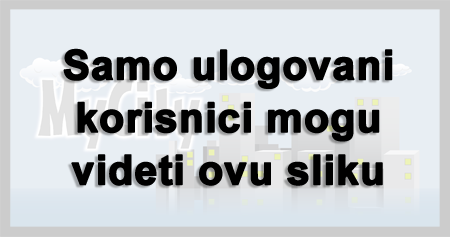|
|
|
|
|
Poslao: 27 Jul 2011 12:07
|
offline
- ray ban11
- Legendarni građanin

- Pridružio: 17 Sep 2010
- Poruke: 24208
|
Napisano: 27 Jul 2011 11:59
jos ponesto o ovim projektima
 [Link mogu videti samo ulogovani korisnici] [Link mogu videti samo ulogovani korisnici]
 [Link mogu videti samo ulogovani korisnici] [Link mogu videti samo ulogovani korisnici]
 [Link mogu videti samo ulogovani korisnici] [Link mogu videti samo ulogovani korisnici]
Dopuna: 27 Jul 2011 12:07
navodno je i YB-60 bio projekat bombardera na nukl. pogon
 [Link mogu videti samo ulogovani korisnici] [Link mogu videti samo ulogovani korisnici]
(YB-60) Nuclear powered aircraft
On April 27, 1949, a conference was held at Oak Ridge National Laboratory, Tennessee (ORNL), between NEPA contractors, the Air Force, and AEC personnel, with the intent to plan Oak Ridge participation in the NEPA project. The ORNL NEPA effort was called the Aircraft Nuclear Propulsion project (ANP) and was established under Air Materiel Command project officer Lt Col Clyde D. Gasser.
ANP was a more vigorous program than the original NEPA project, and really began to seriously tackle the many problems posed by nuclear flight. Fairchild was dropped as the prime contractor and major design efforts began at Lockheed and Convair's Fort Worth division. While many types of engines were studied by ANP, including giant propellers driven by steam turbines, as of 1951-2 the Air Force's vision of an operational nuclear-powered bomber centered on the mammoth Convair YB-60, a swept-wing, turbojet-powered modification of the B-36 strategic bomber. It was a far cry from Newsweek's compact 1945 flying wing. NEPA's July 1947 report had set its sights on the goal of building an aircraft in the 300,000 lb gross weight range, with a speed of 515 mph at 35,000 ft and a weapon load of 12,000 lb. The B-60 closely followed those criteria.
The nuclear powerplant designed for the B-60 was the General Electric P-1, an air-cycle reactor with a thermal output probably in the 50 megawatt range, which was married to four powerful GE XJ53 turbojet engines by a complex tangle of air ducts. The reactor would be cooled both by the airflow from the turbojets and by boron-laced shielding water circulating through its shell. As the XJ53 had a rated thrust of about 17,500 lb, the four nuclear-heated engines would have had approximately the same thrust as all eight conventional J57s on the rival Boeing XB-52.
Air from the turbojet compressors would flow directly through the reactor core, where it would be heated to some 2,000 degrees F before being returned to the engine turbine sections. Though this was a relatively simple and direct method of constructing the nuclear engine, it had the drawback of producing an exhaust plume that would contain radioactive particles and contaminants.
A prototype GE X39 nuclear-heated turbojet, based on the J47 used in the B-47 bomber, shows air duct scrolls for connection to the reactor (arrows). With a thrust output of between 5,000 and 7,000 lb, this engine was used for ground testing of reactor prototypes.
When the P-1 engine was applied to the actual B-60 production nuclear-powered bomber, the reactor/J53 engine complex apparently would have been installed in the aft bomb bay area of the fuselage, as far as possible from the crew compartment. The arrows, below, indicate the probable location of the engine assembly. (The B-60 flew numerous times powered by conventional turbojets, but never with the nuclear engines). Heavy shielding was planned, consisting of tanks of a water-boron solution (boron-10 isotope is an excellent neutron absorber), plastics (possibly polyethylene with boron or lead additives) and layers of metal such as lead, steel and tungsten. The crew compartment itself would have had additional shielding. This "divided shielding" concept was considered one of the major technical breakthroughs of the early NEPA project.
|
|
|
|
|
|
|
Poslao: 27 Jul 2011 13:11
|
offline
- su47berkut
- Super građanin

- Pridružio: 02 Jan 2010
- Poruke: 1462
|
Садашњом технологиом Гама зраци су незауствљиви тако приче да ће глобал хак имати нуклеарни погон је чиста глупост јер ће зрачење доћи до земље,а у случају обарње имаће исте последице као нуклаерно оружије што ће изазвати нуклерни рат. Једини нечин за покретање авиона и беспилотних летелица је могућа Фузиом,али се зна да фузију још неможемо контролисати нити тако лако покренути.
Тренутно нуклерни погон може се користити само у космосу,али под условом ако је могуће посаду заштити.
|
|
|
|
|
|
|
Poslao: 01 Feb 2013 00:03
|
offline
- Iskander M

- Super građanin

- Pridružio: 05 Jul 2012
- Poruke: 1246
|
Шеф Роскосмоса је рекао да ће Роскосмос трећину свог буџета одвојити за развој нових летелица и мотора, међу којима и ракетни носач на нуклеарни погон.
Alexander Nevsky ::Povecava se broj satelita
[Link mogu videti samo ulogovani korisnici]
|
|
|
|
|
|
|
|
|
|
|
|
|
Poslao: 14 Feb 2015 14:03
|
offline

- Gavrilo Milentijević
- Komandir stanice milicije Gornje Polje
- Pridružio: 12 Feb 2005
- Poruke: 36223
- Gde živiš: ovalni kabinet
|
Ovaj B-36 je baš bio mrcina od aviona

|
|
|
|
|
|
|
|




















